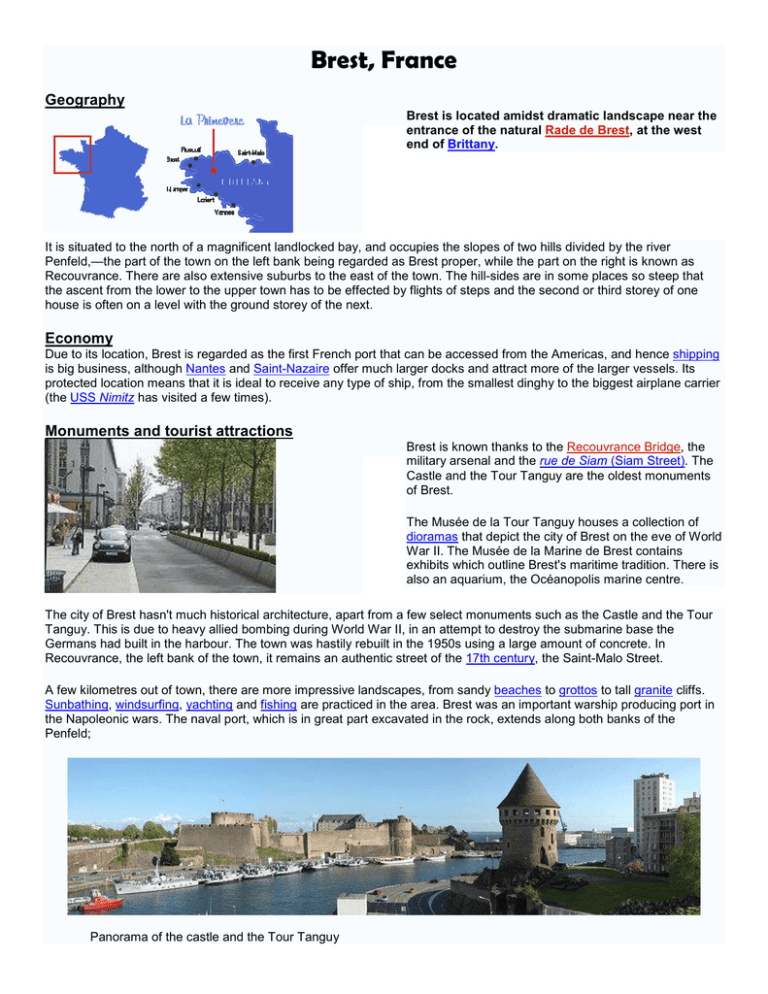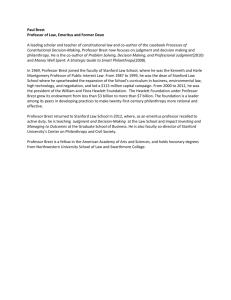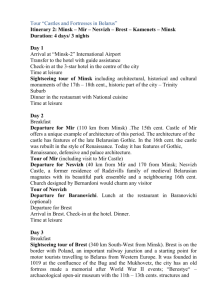Brest, France Geography
advertisement

Brest, France Geography Brest is located amidst dramatic landscape near the entrance of the natural Rade de Brest, at the west end of Brittany. It is situated to the north of a magnificent landlocked bay, and occupies the slopes of two hills divided by the river Penfeld,—the part of the town on the left bank being regarded as Brest proper, while the part on the right is known as Recouvrance. There are also extensive suburbs to the east of the town. The hill-sides are in some places so steep that the ascent from the lower to the upper town has to be effected by flights of steps and the second or third storey of one house is often on a level with the ground storey of the next. Economy Due to its location, Brest is regarded as the first French port that can be accessed from the Americas, and hence shipping is big business, although Nantes and Saint-Nazaire offer much larger docks and attract more of the larger vessels. Its protected location means that it is ideal to receive any type of ship, from the smallest dinghy to the biggest airplane carrier (the USS Nimitz has visited a few times). Monuments and tourist attractions Brest is known thanks to the Recouvrance Bridge, the military arsenal and the rue de Siam (Siam Street). The Castle and the Tour Tanguy are the oldest monuments of Brest. The Musée de la Tour Tanguy houses a collection of dioramas that depict the city of Brest on the eve of World War II. The Musée de la Marine de Brest contains exhibits which outline Brest's maritime tradition. There is also an aquarium, the Océanopolis marine centre. The city of Brest hasn't much historical architecture, apart from a few select monuments such as the Castle and the Tour Tanguy. This is due to heavy allied bombing during World War II, in an attempt to destroy the submarine base the Germans had built in the harbour. The town was hastily rebuilt in the 1950s using a large amount of concrete. In Recouvrance, the left bank of the town, it remains an authentic street of the 17th century, the Saint-Malo Street. A few kilometres out of town, there are more impressive landscapes, from sandy beaches to grottos to tall granite cliffs. Sunbathing, windsurfing, yachting and fishing are practiced in the area. Brest was an important warship producing port in the Napoleonic wars. The naval port, which is in great part excavated in the rock, extends along both banks of the Penfeld; Panorama of the castle and the Tour Tanguy


